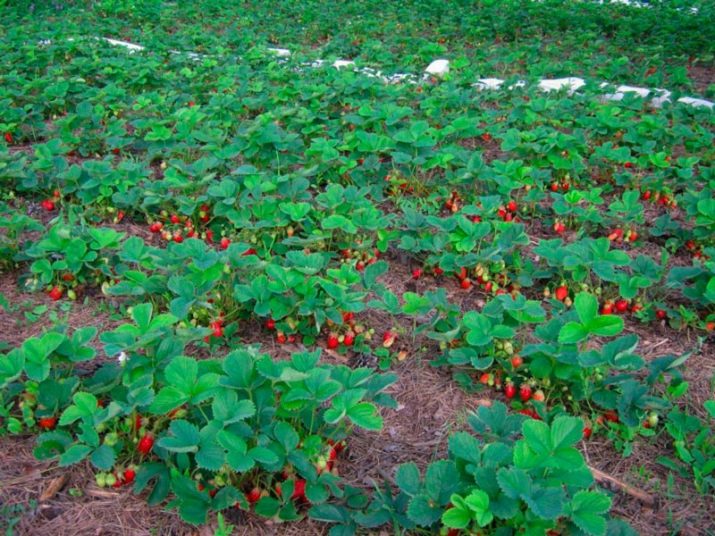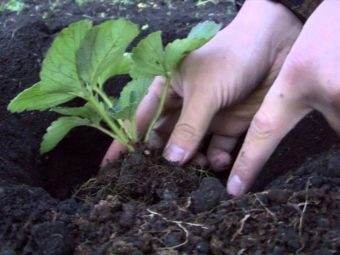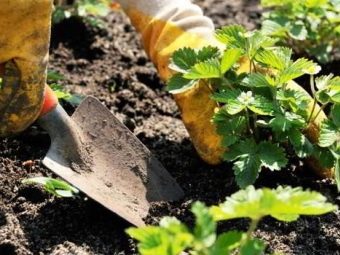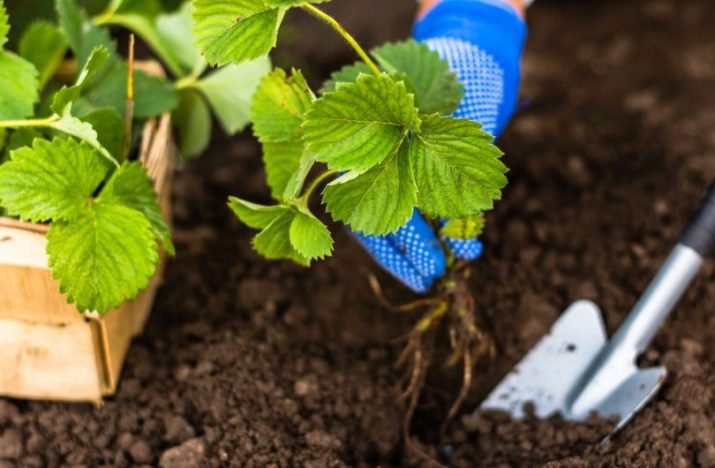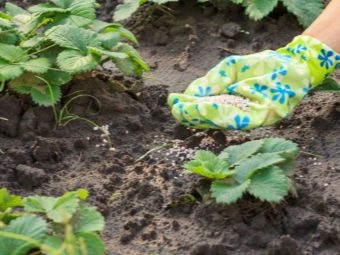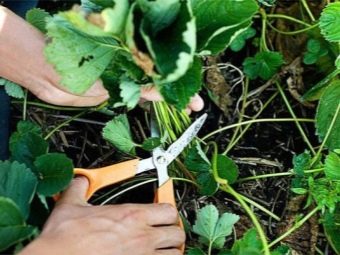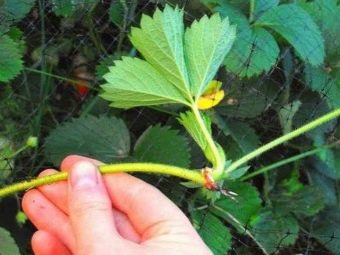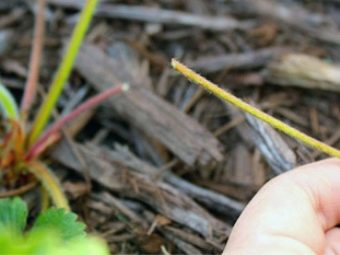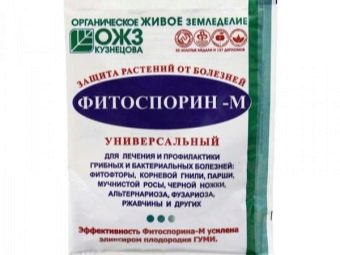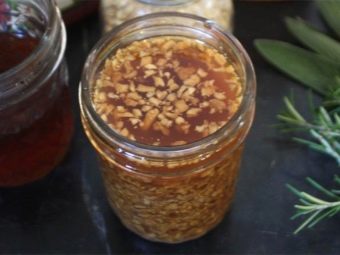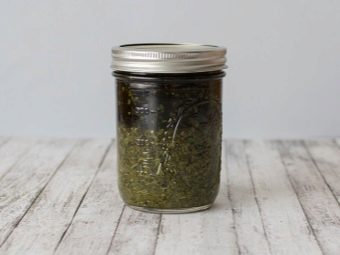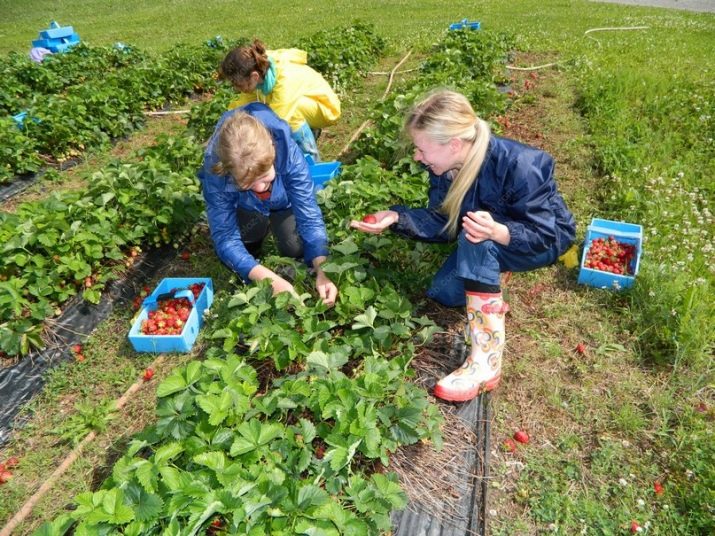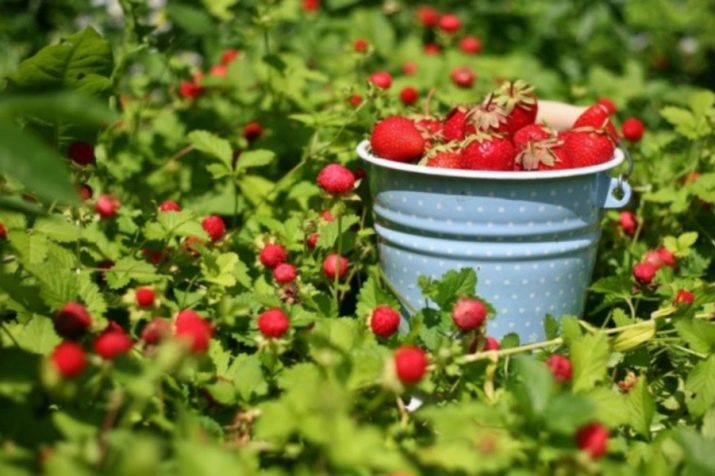Planting strawberries and caring for them in July
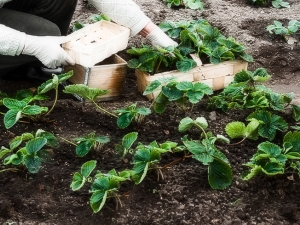
After fruiting, strawberry plants remain active for a long time.It is during this period that they accumulate useful components necessary for wintering. If you organize high-quality and full care for strawberries after harvesting (usually in July), then next year you can get an increase in the usual number of berries by 30-40%. Well-fed bushes will be able to relax and gain strength over the winter, and next year they will delight the gardener with sweet and juicy fruits.
Landing
The lunar calendar suggests that strawberries should be planted in the summer. The optimal days for planting are July averages. During this period, it is recommended to prepare the soil, as well as to check the acidity of the soil (it should be moderate). If necessary, the acidity can be reduced with flour or hydrated lime.
Seedlings should also be prepared and inspected. They must be healthy looking, have well developed roots. There should be no signs of pests or diseases on the leaves and stems. After planting, the seedlings need to be watered for the first 10 days so that they will settle down better. This is necessary for the full development of culture. In the future, watering is carried out less frequently.
If the plants were grown in peat cups, then you do not need to remove them from there. You can bury strawberries in the ground right with them. This will provide additional nourishment for the bushes.
The easiest way to plant is a single-line method with a distance of 30 cm between the bushes, and between the rows - 60 cm. Do not plant strawberries too thick, as this will negatively affect its productivity.
Gardeners argue that the best time to disembark is evening or morning hours. During the day, it is recommended to refuse such a procedure, since the sun creates heat, and this has a negative effect on the survival of the sprouts.
Watering and feeding
In order to get good yields, it is important to properly care for strawberries. As already mentioned, after landing in July, it must be watered on a mandatory basis. The abundance and frequency of irrigation depend on the weather. In warm weather (including very hot days), it is necessary to water each plant 1 time in 6 days. If it's cool outside, then the amount of watering decreases. In no case should not allow the soil to dry. If there was no precipitation for a long time, then about 10 liters of water should be poured into each bush at a time.
To strawberries grow well, the first feeding should be made immediately after the planting of bushes. Experts recommend fertilizing the crop using nitrogen-based products that will stimulate the growth of new foliage. To do this, you can choose nitroammofosku or ammofosku. In the second half of July, the culture can be fertilized with organic components, for example, bird droppings or mullein. It is not recommended to bring them into the soil fresh. It is necessary to dilute them in water in a ratio of 1:10.
Strawberry loves nutritious soil, but it does not tolerate chlorine. Therefore, any fertilizer based on this element is prohibited to be applied to the site, otherwise the plant will bear bad fruit.
Rejuvenation bushes
One of the important agrotechnical measures is plant rejuvenation. Immediately after the harvest, it is necessary to rejuvenate all the bushes. This will require trimming and removing extra mustaches. It is also advisable to remove all weeds from the area during this period. Affected and unhealthy sprouts must also be removed and burned.
Pruning is done by removing the leaves with scissors. Another option is to comb the bushes with a rake. Experts do not advise picking off plants with their hands, as this can cause damage to the roots. But if there is no other way, then when cutting off the whiskers it is necessary to support the bush with the other hand. This should be done as carefully as possible.
Strawberries can be mowed on large beds, which will save time on removing old bushes and antennae.It will also provide an opportunity to get rid of diseases of the culture and to provide good ventilation, which will help the roots to gain strength. Strawberries are recommended to mow when their age reaches 3 years. This has a rejuvenating effect, and also ensures that the next year will have a great harvest.
It is important to remember that you can only mow old bushes, young shoots should not be touched.
Whisker removal
If you do not plan to plant strawberries in the future, then it is necessary to trim the mustache a week after the harvest. This is usually done in the twentieth of July, but the timing may shift depending on the weather in the area of cultivation. Understand that the mustache must be removed, you can on the young green on the plants after harvest.
Sometimes you have to trim a mustache several times after fruiting. At the same time, experts note that if mowing strawberries will be done, trimming the whiskers is not necessary.
Before the removal of the whiskers, it is necessary to water the beds well in 2-3 days. This will facilitate the process. The procedure is recommended on the second or third day after watering. Better to do it in cloudy weather. It is permissible to carry out the procedure in other conditions. The main thing - that the street was not a strong heat.
With the trimming of the whiskers, it is not necessary to tighten it so that the plants after the procedure can recuperate and prepare for the winter. During the event, it is also important to remove all damaged bushes that have signs of disease or rot.
Prevention of diseases and pests
The end of July is the optimal time to help the culture protect itself from diseases and insects. To do this, it is treated with a solution of potassium permanganate of a small concentration. Sprayed both the soil and the bushes themselves. After this procedure, it is recommended to examine the plants for the presence of viral pathologies and, if necessary, process them with Bordeaux mixture. Damaged sprouts better to take out of the garden or burn.
To prevent the appearance of pathologies in the future, it is necessary to carry out preventive measures. Some infectious diseases can be carried with the wind, as well as during rain with water. This increases the risk of disease of healthy bushes located on the site. Therefore, inspect the beds, removing old and diseased shoots, should be throughout the season.
It is also worth taking measures to prevent rotting of the roots. To do this, it is necessary to control the soil moisture. If rot appears on the bushes, they can be treated with Fitosporin.
You can also treat the area with odorous mixtures that will prevent the appearance of insects. To do this, you can use the infusion of garlic or tobacco. A good solution would be planting odorous plants near the garden beds.
Harvesting
With the harvest, you should not delay, as the berries can over-ripen, which will negatively affect their appearance and taste. Also, an over-ripe berry can begin to rot with an abundance of water, as a result of which various pests will appear on it. They can be transferred to other bushes, damaging them, so it is recommended that the crop be harvested as soon as it ripens.
It is necessary to do this only 10-15 days for the whole season, since it is during this period that the berry will ripen quickly. You should not wait until all the berries ripen, you need to collect from as far as "ready". In order to prevent the appearance of decay on the fruit during ripening, it is recommended to spread clean matter or to put fresh cut grass under the bushes, which will prevent the contact of strawberries with the ground. It will also help to keep moisture in the soil longer and prevent weeds from appearing.
Gardeners tips
As is clear from the above, the process of growing strawberries is complicated only at first glance. To get a bountiful harvest of this delicious berry, you just need to follow all the recommendations of experienced gardeners.
- Landing can be made at the end of May, in July and at the end of August.
- Breeding should be done with the help of young and healthy bushes that were purchased from trusted vendors. You can also display them yourself.
- Chemical processing of strawberries can be carried out only before flowering and after harvesting. If you need to hold activities in the period of fruiting and flowering, then you can use only organic fertilizers, which are poured directly under the root.
- All work with strawberries in the garden is carried out only in the absence of sun in the sky (early morning or evening).
- Short mustaches are trimmed with sharp shears or scissors. Tools must be pre-sanitized with a concentrated solution of potassium permanganate.
- It is important to periodically loosen the soil and maintain the necessary moisture in the area.
- It is recommended to put compost on beds at least once a year. This will help maintain the nutritional composition of the soil.
- For the winter, the bushes are provided with good shelter so that they do not freeze and fall ill.
After harvesting, it is necessary to mulch the beds in order to protect both the bushes themselves and the ground from freezing. As mulch, use pine needles or grass. You can also use straw. The layer of mulch should be 10 cm.
When conducting such events, care must be taken to ensure that the weakened bushes are carefully covered. Mulching is carried out in dry weather, when the temperature is within + 7 ° C. There is no specific time limit for shelter, since it depends on weather conditions in a particular area.
The technology of planting strawberries in July is shown in the following video.

